Mar 7, 2020
Interview with a geigi: Higashiyama Onsen, Aizuwakamatsu
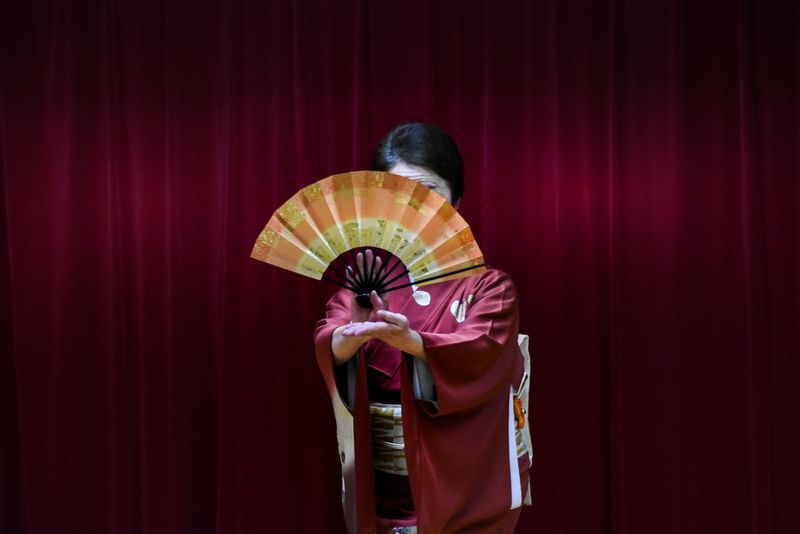
Dinner has been served and the geigi enter the room. Two of them. They pour drinks for our party and for a moment there is an awkward silence, team City-Cost had never imagined they would be sat at such high tables of entertainment, and quite frankly, we don’t know what to do. Or say.
The two geigi -- Mikiko-san and Hitomi-san -- also look a little confused, at first. Perhaps they’ve never been called in to entertain a bunch of foreigners before and are wondering how best to proceed.
“The individual tourist from overseas usually doesn’t have the budget to be entertained by geigi,” explains Mikiko-san. “Most of our bookings come from companies and other organizations.”
Between the two of them though, Mikiko-san (late 60s) and Hitomi-san (50s) both from the city of Aizuwakamatsu, have decades of experience working as geigi, female entertainers and performers of traditional Japanese arts, here in Higashiyama Onsen, a small hot-spring resort in the mountains southeast of downtown Aizuwakamatsu City, in Fukushima Prefecture.
Established some 1,300 years ago by a Buddhist priest Higashiyama Onsen became a popular venue of relaxation and recuperation for battle-scarred samurai of the area’s Aizu clan during the Edo Period. When the Meiji government moved in (and moved the samurai into exile), the geigi followed and they have been here ever since.
Decades of experience maybe, but tonight's geigi will have their work cut out with this customer whose efforts at being conversant have thus far been limited to saying thank you each time the drink gets topped up. Mercifully Hitomi-san starts to take control.
“It’s OK. You don’t need to say “thank you” each time. Just once was enough.”
Instead I ask her what some of the more experienced customers like to talk about.
“Work, sometimes silly stuff. Adult talk,” she explains with a wry grin.
Feeling unable to jump straight from nervous pleasantries and into the more saucy recesses of my mind I sit back and let a melty, post-onsen fug and a cup too many of umeshu do its work. Besides, it’s performance time.
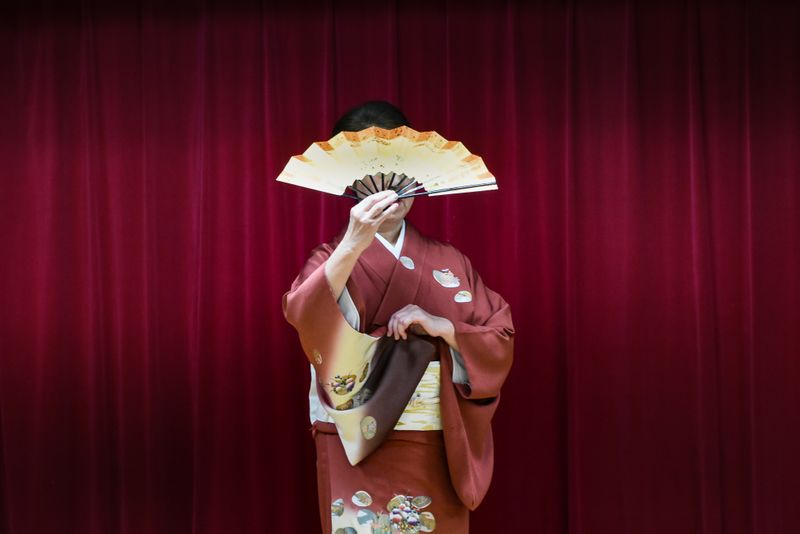
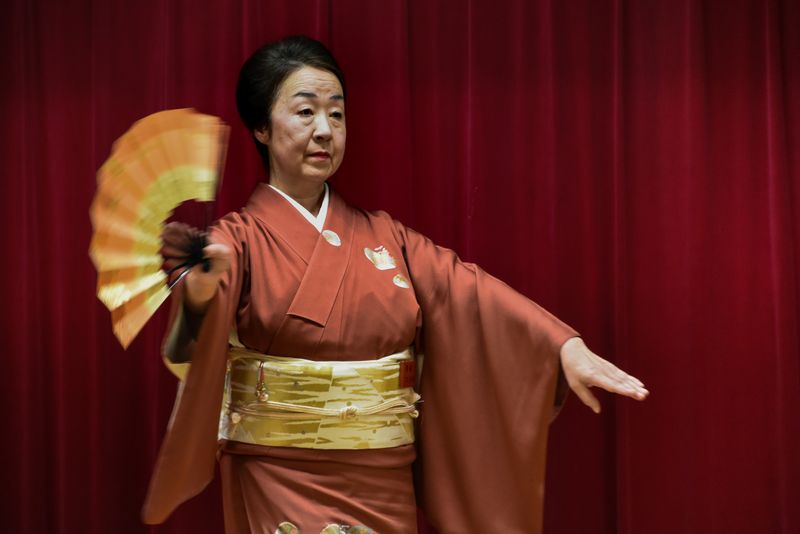
(Higashiyama Onsen geigi Hitomi-san dances during a performance at accommodation facility Harutaki, Aizuwakamatsu City)
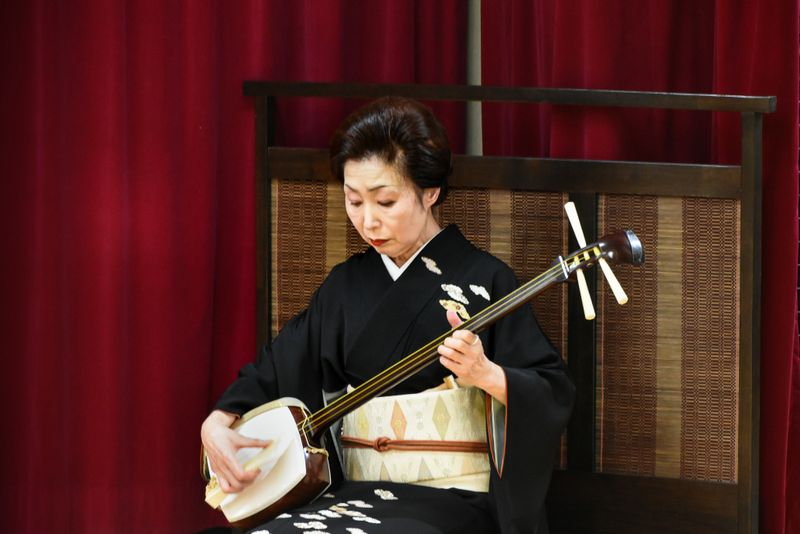
(Mikiko-san plays the shamisen during a geigi performance in Higashiyama Onsen, Aziwakamatsu City)
The pair perform a seasonal song about plum blossoms with Hitomi-san taking center stage as the dancer while Mikiko-san provides the musical accompaniment, by way of a shamisen. Despite the haunting sounds to these foreign ears, the song is meant to bolster the spirit. During March and April they will switch to songs about the cherry blossom.
Despite the two cultures having never met, the geigi of Higashiyama Onsen are also known to perform numbers based on the tragic story of the suicide of 19 Byakkotai, teenage samurai who fought for Aizu against imperial forces during the Boshin War which brought an end to feudal rule in Japan.
Hitomi-san may have been center stage during the performance, but it’s Mikiko-san who takes control of the off-stage dynamic. In answering our questions she switches with consummate ease between short, almost sharp and into an eloquence that has this customer at least, hanging onto her every word
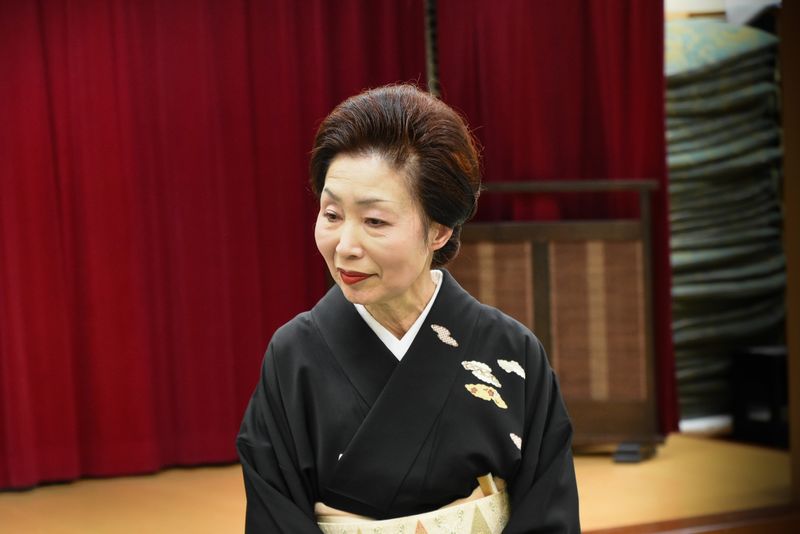
Born to a single mother, who herself was a geigi, Mikiko-san has been in the business since she was 18 years old, getting into it because she liked to dance, “the most important skill to be mastered by the geigi,” she explains.
In the past prospective geigi would have to undergo rigorous training to then assume the title of “geigi.” Today, young women become geigi by joining their local union before undertaking training on the job.
For the geigi of Higashiyama Onsen this means visits, five days to a week each month, from a teacher based in Tokyo who comes to give lessons in shamisen and tsuzumi (a small drum). The dance instructor is based in Aizuwakamatsu. It takes around three years to complete training.
“It’s basically the same as with Kyoto, the dancing and the songs,” Mikiko-san explains when asked about any differences between the culture of geigi here in Fukushima Prefecture, compared to their counterparts in Kyoto, where they are known by the more familiar term geisha.
“Only in Gijon is it different. They have a different school where the dancing is associated with Noh theater. And it’s only in Kyoto where the girls can get into this world at 16, after graduating from junior high school. For geigi across the rest of Japan it starts at 18.”
Perhaps to our shame the only cultural reference most of us in the room had up to this point is the 1997 novel Memoirs of a Geisha. The title falls on deaf ears with our hosts. Sayuri, the Japanese title of the novel-inspired 2005 motion picture, however, is greeted with knowing nods all round.
We ask if the path to becoming a geigi is really as tough as it appeared for the movie’s protagonist.
“That was a long time ago. It’s not like that anymore. It’s still tough, but for me I never felt like I wanted to give up (during the training). Instead, I came to enjoy it.”
And, no, unlike in the novel, most prospective geigi today live separately and commute to training and work. Although the house-sharing does exist in some areas, according to Mikiko-san.
In her late 60s (“There is no age of retirement for geigi.”) and single (getting married means getting out of the life) and showing no signs of slowing down, Mikiko-san tells us that she works almost every day.
“There’s nothing I don’t enjoy about the work, except maybe the odd drunken customer.”
It’s a situation that might sound like a healthy one for an independent entertainer -- business is good then. But a packed schedule of appointments perhaps reflects a lack of geigi to entertain a rapidly aging customer base, leading to concerns about who will follow in Mikiko-san’s footsteps, and whether or not they will have any customers to entertain.
There are currently 15 geigi working in Higashiyama Onsen and in other locations in the city of Aizuwakamatsu, the largest number across all six prefectures of the Tohoku area. (By comparison Mikiko-san speculates that there might be around 50 to 60 working in Tokyo’s Shimbashi district, one of the capital’s centers of the culture.)
“Young people do have an interest in it. Of course, they like the dancing and the kimono,” she says. “But actually the population of geigi is declining so if we don’t make efforts to preserve it, it will disappear. It’s in something of a crisis.”
There is interest from overseas though, with some geigi from Higashiyama Onsen recently traveling as far as the U.K. for an appointment.
“These days geigi wear wigs (nihongami) so it was difficult for them at the (airline) check-in counter. They didn’t know how to explain what it was. They have special carry cases which are so big,” Mikiko-san explains with a giggle, displaying a rare moment of almost child-like humor.
Rare because even in the face of a crisis, you get the sense that Mikiko-san is unflappable. Perhaps it’s part of the job -- the poise, the grace, the never losing control.
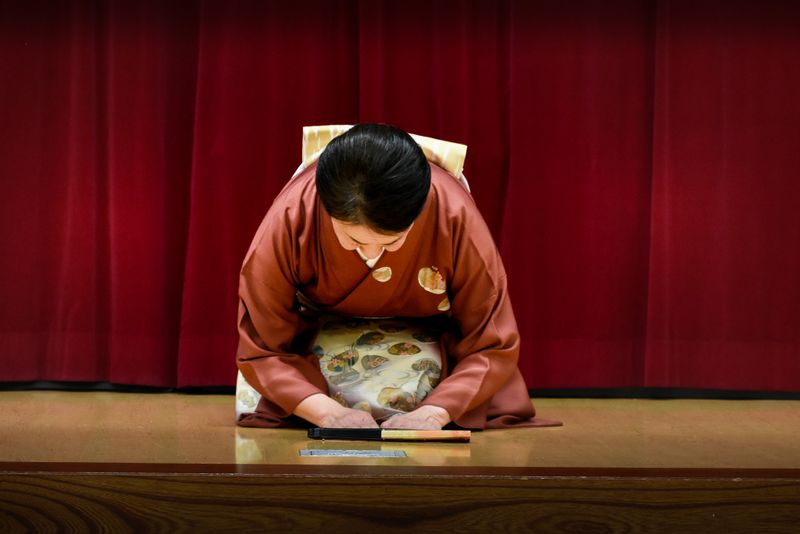
The geigi of Higashiyama Onsen
On this occasion Mikiko-san and Hitomi-san performed in the accommodation facility Harutaki in Higashiyama Onsen. Rooms at Harutaki are available in Japanese or Japanese-Western-style. Indoor, outdoor and private hot-spring baths are also available at the facility.

(Dinner at Harutaki, Higashiyama Onsen)
Harutaki (website): https://www.yumeguri.co.jp/inbound/?lang=en
The Aizu Geigi Promotion Association (あいづ芸妓振興友の会) was founded in 2004 and helps to foster successors to existing geigi and support the culture throughout the Aizu area, among other activities. As of May 2018, the association had 135 members.
The Higashiyama Onsen Tourism Association official website details the standard fee for one geigi entertainer for 90 minutes as 15,000 yen (tax not included). Bookings can be made through the Higashiyama Onsen Geigi-ya Cooperative.
Higashiyama Onsen Tourism Association: http://www.aizu-higashiyama.com/english/geigi.html



0 Comments